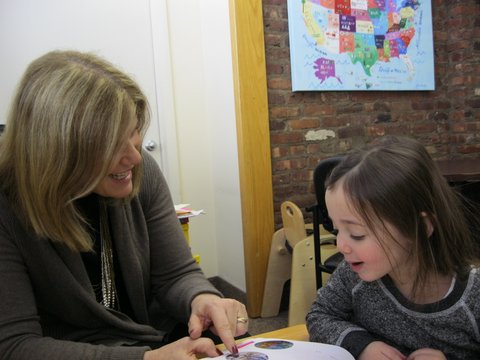Speech Sound Disorders – Articulation and Phonology
Speech sound production refers to the ability to correctly produce speech sounds (phonemes) via accurate placement of the tongue, lips, and teeth. Articulation errors may include omitting, distorting, substituting or adding sounds that can make speech difficult to understand.
View our other approaches:
- Apraxia of Speech (CAS)
- Articulation Disorders
- Auditory Processing Disorders (APD)
- Autism Spectrum Disorder (ASD)
- Deviate Swallow (Tongue Thrust)
- Executive Functions Deficits
- Expressive-Receptive Language Delays/Disorders
- Feeding Disorders
- Fluency (Stuttering)
- Oral Motor Disorders
- Phonological Disorders
- Social (Pragmatic) Communication
- Voice and Resonance Disorders
Articulation approaches to treatment
Focus on speech sound deviation and are treated by a motor-based approach. The aim of an articulation approach is to correct production of the target sound(s).
Phonological approaches to treatment
Target a group of sounds with similar error patterns. Phonological approaches help the child internalize phonological rules and generalize these rules to other sounds within the pattern (e.g., final consonant deletion, cluster reduction).
 Our treatment approach to Speech Sound Disorders is reflected in the following phases of therapy:
Our treatment approach to Speech Sound Disorders is reflected in the following phases of therapy:
- Establishment – eliciting target behaviors and stabilizing production on a voluntary level,
- Generalization – facilitating carryover of sound productions at increasingly challenging levels (e.g., syllables, words, phrases, sentences, and conversation),
- Maintenance – stabilizing target behaviors and making production more automatic; encouraging self-monitoring of speech and self-correction of errors.

Speech Sound Perception Training is a procedure used to help the child acquire a stable perceptual representation for the target phoneme or phonological structure. The goal is to ensure that the child is attending to the appropriate acoustic cues in a variety of listening contexts. Speech Sound Perception Training may include auditory bombardment and identification tasks.
Contrast Therapy focuses on production using contrasting word pairs instead of individual sounds. This approach emphasizes sound contrasts required to differentiate one word from another. Contrast therapy uses pairs of words that differ by only one phoneme signaling a change in meaning.
Contextual Utilization approaches are based on the premise that speech sounds are produced in syllable-based contexts in connected speech and that some contexts can facilitate correct production of a particular sound. The syllable is used as the building block for practice at more complex levels.
Tactile Therapy via Talk Tools are comprehensive muscle-based exercises to address respiration, phonation, resonation and articulation through the use of horns, straws, bite blocks and other oral-motor instruments. Developed by Sara Rosenfeld-Johnson, this approach is a tactile teaching technique which supplements traditional articulation therapy. The premise of Talk Tools is that speech is superimposed on normal muscle movement. The child-friendly instruments are designed to address a specific muscle group, with the goal of improving speech clarity.
Core Vocabulary Approach focuses on whole-word production and is typically used for children with inconsistent speech sound production. A list of frequently used words is developed and is targeted during treatment sessions. The child is taught to produce his “best” word approximation and the words are practiced until consistently produced.
Distinctive Features Therapy focuses on elements of phonemes that are lacking in a child’s repertoire (e.g., frication, nasality, voicing, and place of articulation) and is used for children who primarily substitute one sound for another. This approach uses tasks that compare the phonetic elements/features of the target sound with those of its substitution or some other sound contrast.
Oral-Motor Therapy is based on the rationale that deficient oral-motor control or strength may be causing poor articulation and that it is necessary to teach control of the articulators for correct production of speech sounds. Goals of an oral-motor approach include increasing the child’s awareness of the oral mechanism and its parts, normalizing oral-tactile sensitivity, inhibiting abnormal and facilitating normal oral movement patterns, and increasing differentiation of oral movements in order to achieve successful speech sound production.
Myofunctional Therapy (Tongue Thrust Therapy) is a therapeutic regimen which has been developed to correct improper muscle and swallowing habit patterns. Children with myofunctional deficits frequently have coexisting articulation errors, drool, have a flaccid facial appearance, and breathe with their mouth open. Children may also exhibit noxious habits such as nail biting and/or finger/thumb sucking, which will be addressed as part of our therapy regimen. Our myofunctional therapy team includes the parent and the child’s dentist or orthodontist. Our therapy protocol consists of a diagnostic evaluation, specific myofunctional exercise products provided to the child for home carryover, as well as motivational charts and checklists. The goals of myofunctional therapy are to facilitate improved oral function in order to eliminate tongue thrust, to prevent functional increase in open bite or overjet, to assure stability of correct occlusion, to correct the coexisting articulation errors and to eliminate any noxious habits.
At Suburban Speech Center, our speech sound disorders treatment approach is individualized to each child’s needs. Home carryover is an integral part of the program. Each child is provided with a speech notebook that contains age appropriate treatment objectives and interactive exercises.
